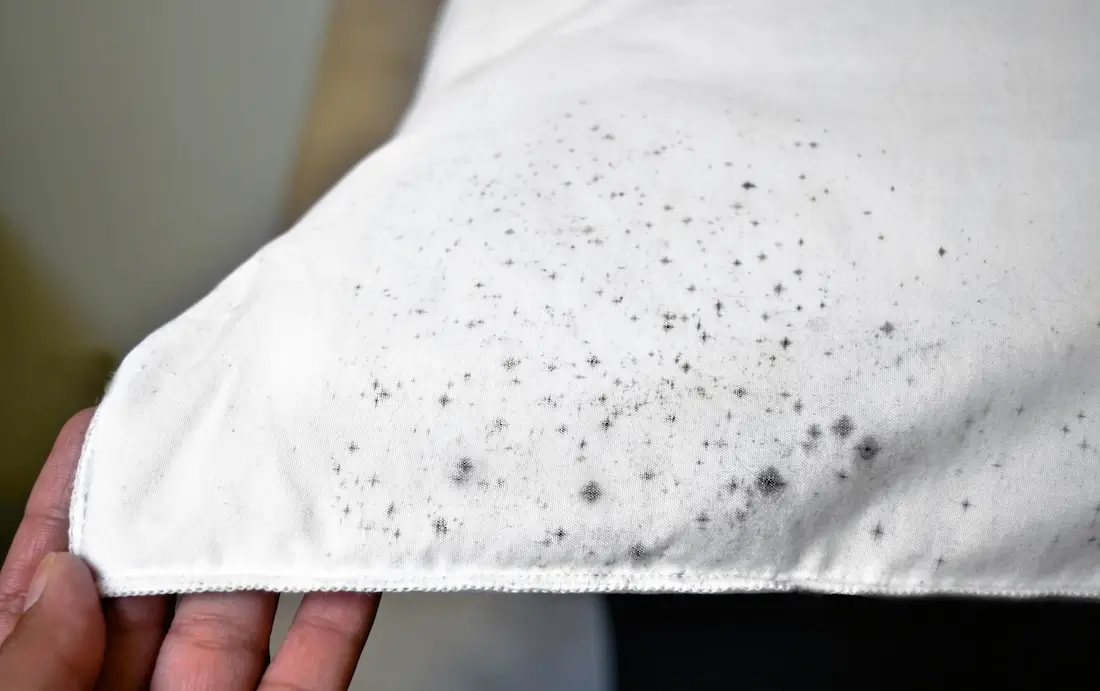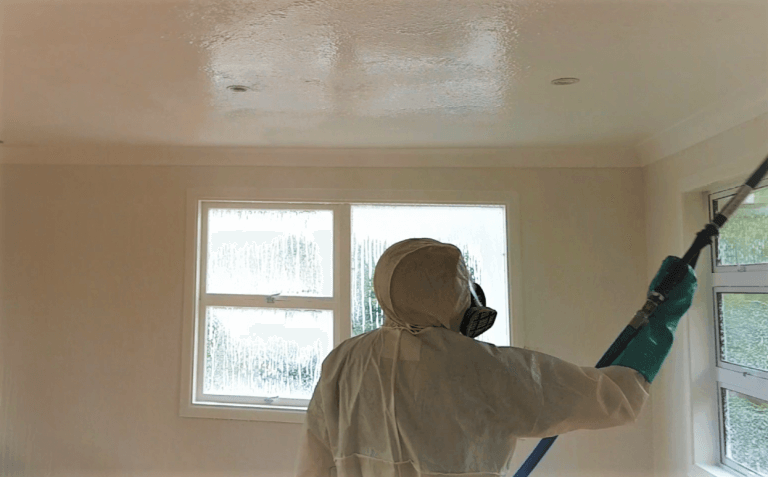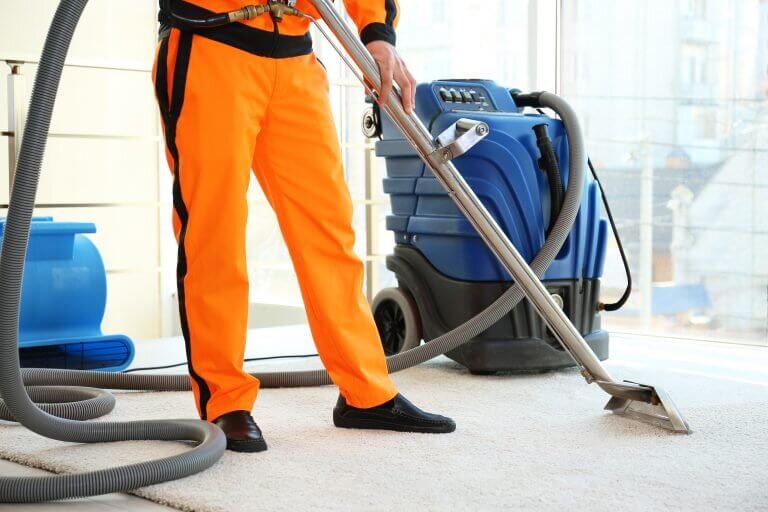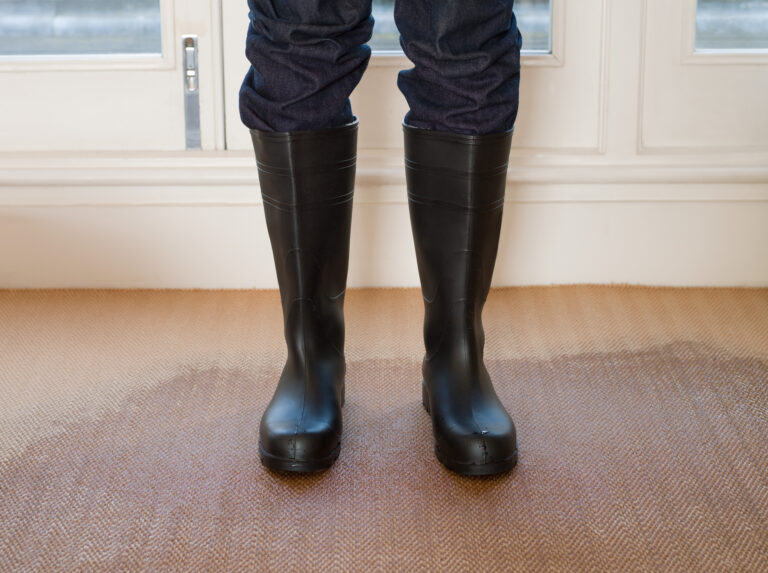Given the frequent periods of warmer, humid weather in New Zealand, areas with poor ventilation often find fabrics ranging from curtains and caravan awnings to our favourite clothes as breeding grounds for mould.
The proliferation of mould in our homes and workplaces can be a significant concern, posing risks to our health and our belongings’ integrity.
If you’re regularly encountering this problem, don’t despair!
As the experts in mould restoration in Auckland, Hamilton and surrounding areas, our team at Restate Property Restoration have compiled everything you need to know about how to remove mould from fabric. We’ll discuss what to look for, the different approaches for each fabric, prevention methods, and when it’s time to call the professionals.
Recognising Mould: What to Look For
Mould can appear differently on fabrics than on other items, so it might be difficult to identify.
Here are a few key signs to look for:
- Discolouration: Mould usually presents itself as discoloured patches on your fabric, often in hues of grey, white, black, or green. Look out for any uncommon colour changes on the fabric, be it your curtains with thermal backing or caravan awning.
- Musty Smell: Mould carries a very distinct musty odour that’s hard to miss. If your fabric smells damp and musty, it’s time to inspect it closely for mould.
- Texture Changes: Mould changes the texture of certain fabrics. The affected area may appear fuzzy or slimy to the touch.
- Visible Spots: Clear grey, white, black, or green slimy spots appear on your fabric, indicating mould growth. Remember, these spots may not necessarily stick to the surface and can be nestled in the material’s threads.
Finding any of these signs should prompt immediate action.
The Health Risks of Mould Exposure
Exposure to mould can cause a string of health complications. It produces toxins known as mycotoxins, which can become airborne and easily inhaled. This can prove especially dangerous for those with pre-existing health conditions or a weaker immune system.
These problems include:
- Allergic reactions: Some people may experience common allergic responses such as skin rash, runny nose, eye irritation, cough, nasal congestion, and aggravated asthma.
- Respiratory problems: Inhaling mould fragments or spores can cause inflamed airways, wheezing, chest tightness, shortness of breath, and pneumonia.
- Neurological problems: Exposure to certain types of mould, like ‘black mould’, can lead to neurological problems and sometimes even cause changes in mood and behaviour.
Prevention Tips to Avoid Having to Remove Mould from Fabric
Nobody wants to deal with the trouble of mould-infested fabric. Before you find yourself needing to remove black mould from clothes or start frantically searching how to remove mould from curtains with thermal backing, there are some preventative measures you can take to ensure your fabrics stay mould-free:
- Ventilation: Mould proliferates in damp and stagnant environments. Ensure your spaces are well-ventilated, particularly where you hang your clothes for drying or storing your fabrics. If possible, try using exhaust fans, especially in kitchens and bathrooms.
- Humidity control: Try maintaining relative humidity in your home under 65%. Humidifiers or dehumidifiers can help keep your air moisture levels in check.
- Regular Cleaning: Wash your fabrics regularly, and don’t let damp clothing sit in the laundry basket or washing machine for too long, as this can provide the perfect breeding ground for mould.
- Immediate Drying: Ensure all clothes and fabrics are completely dry before storage. The sun can act as a natural mould deterrent, so try to hang dry them in the sun if possible.
- Proper Storage: Store clothes and fabrics in a cool, dry spot, and avoid cramming them into drawers or boxes where airflow is limited.
Remember, prevention is your best weapon against mould. But if you encounter the issue, whether on your curtains, clothes or caravan awning, you still need to know how to remove mould from fabric.
How to Remove Mould from Various Types of Fabric
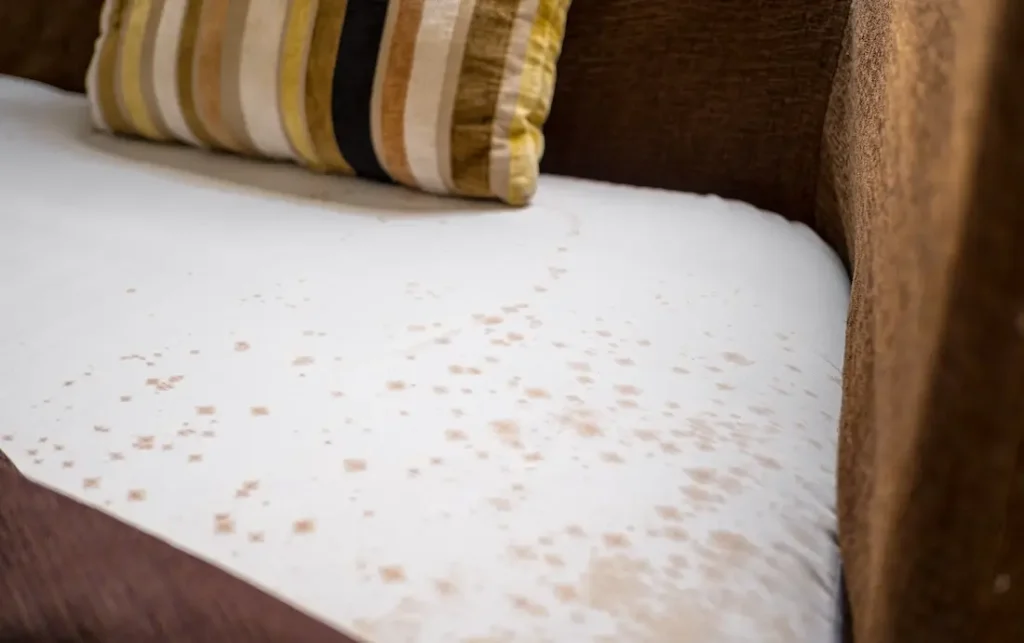
How to Remove Mould from Curtains with Thermal Backings
As a homeowner or property restorer, dealing with a mould issue can be daunting, especially when it comes to delicate fabrics like curtains with thermal backings. Removing mould from these materials can be accomplished with the right technique and a bit of patience.
Here are some gentle, effective steps to consider:
- Check the care labels: Always start by checking the care instructions for your curtains. As some fabrics may only be dry-clean friendly, the specific instructions will guide you on the safest way to clean them without causing any damage.
- Prepare your curtain mould remover solution: Make a gentle yet effective mould-removing solution. Mix one part vinegar with four parts water and add a couple of drops of essential oil for a pleasant scent. The vinegar’s acidic quality helps kill the mould while preserving the fabric of your curtains.
- Apply the solution: Gently mist the solution onto the mouldy areas using a spray bottle. Ensure that you do not oversaturate the fabric. The aim is to dampen the mould to prevent airborne spores during cleaning.
- Bristle brush cleaning: Use a soft bristle brush to gently scrub the mouldy areas on your curtains or thermal backing. Always remember to clean both sides for a thorough clean.
- Drying your curtains: Leave your curtains out in the sun to dry or, if the fabric allows, use a dryer. The sun’s UV rays help to further kill any remaining mould spores, while the heat from the dryer can also assist in mould eradication.
Remember that when dealing with mould, always do so in a well-ventilated area and use protective gear like gloves and a mask.
How to Remove Mould from Canvas Awnings and Caravan Awnings
Removing mould from canvas awnings and caravan awnings can pose a unique challenge. These large outdoor fabrics get exposed to all types of weather, creating a haven for mould spores in the right environments.
Here’s what the restoration task will entail:
- Get Prepared: Wear protective clothing, including gloves and a mask, to protect yourself from an influx of mould spores. As always, carry out any cleaning procedures in a well-ventilated area or, better yet, outdoors.
- Dry Brushing: Using a stiff-bristled cleaning brush, dry brush the awning to remove loose mould, dust, and dirt. Take caution to brush in one direction to avoid spreading the spores.
- Create a Cleaning Solution: Mix one part mild detergent like Borax with four parts water. Ensure the solution isn’t too strong, as it can damage the fabric.
- Apply Cleaning Solution: Using a soft cloth or sponge, apply the cleaning solution to the fabric, paying particular attention to mouldy areas. Gently but firmly scrub the area until the mould is gone.
- Rinse Thoroughly: Rinse the fabric with plenty of water. Make sure all of the cleaning solution is completely rinsed off, as residue can attract further dirt and encourage future mould growth.
- Drying: Leave the awning to dry in the sun. Sunlight has natural mildew-killing properties that will help totally destroy the mould.
- Further Protection: To prevent future growth, consider using a mould inhibitor. Apply it according to the product’s instructions.
While performing these steps will significantly help remove mould from canvas and caravan awnings, sometimes professionals may be required for large-scale or stubborn mould problems. We have access to stronger solutions and protective finishes that can easily deal with the mould problem, prevent it from returning, and avoid damaging your property.
How to Remove Black Mould from Clothes
Dealing with black mould on your clothes can be no small matter. From your favourite clothes held long in storage to receiving a second-hand batch, you can effectively and safely remove mould without compromising the quality of your clothes by applying some of these straightforward remedies:
- Vinegar solution: Vinegar’s natural acidity makes it an excellent option for killing mould spores. Put white/distilled vinegar into a spray bottle and saturate the mouldy areas completely. Leave the vinegar on the clothes for about an hour, then wash following the regular process.
- Borax: Available in detergent or powder form, this mineral dissolves directly in water, acting as a natural agent to eliminate mould. Should you choose the powder variant, blend half a cup of borax with hot water, following the provided guidelines. Afterwards, pour this mixture straight into your washing machine’s drum and wash your garments as usual.
- Baking Soda: A common household ingredient, baking soda is great at removing mould from clothes. Add half a cup of baking soda to your regular laundry detergent and wash the clothes as usual. For stubborn mould stains, make a paste of baking soda and water, apply it to the stain, let it sit for an hour, and then wash.
- Detergent: Regular detergent can remove mould from clothes but may leave some residue. To make the clothes completely mould-free, it’s recommended to soak them in a detergent-rich bath for a longer time before washing them in the machine.
- Pre-soak, then Sun Dry: For badly affected clothes, pre-soak them in hot water and detergent solution for about 30 minutes. After washing, hang dry your clothing in direct sunlight. The sun’s UV rays help kill any remaining mould spores.
Always check the fabric care label before using strong cleaning agents. Also, test any method you choose on a small, not immediately visible part of the fabric first. If the mould stains are too tough to remove, consider seeking professional cleaning help.
When to Seek Professional Services to Remove Mould From Fabric
When you need to remove mould from fabric at home, you will typically find success using readily available cleaning solutions and a bit of elbow grease.
Sometimes, though, DIY methods just won’t cut it. For example, you might find trouble when dealing with stubborn, ingrained mould stains on delicate or rare fabrics that don’t withstand common cleaning agents or high heat. The same applies to a mould outbreak covering a larger area, such as an entire curtain set or a voluminous caravan awning.
Professional mould removal services offer the necessary expertise and equipment to safely and effectively identify and remove mould – permanently. At Restate, we are trained to offer:
- Advanced Mould Detection Equipment: Utilising moisture metres, particle counters, thermal and borescope cameras for early detection and analysis.
- Cost-Effective Solutions: Focus on restoration rather than replacement, offering affordable mould remediation to save time and money.
- Detailed Investigations and Reports: Employ the latest technology for in-depth analysis, providing clear reports on microbial growth risks and water intrusion issues.
- Price Beat Guarantee: Working with a competitive pricing promise, beating any lower quote for the same service by 10% under specific terms and conditions.
- Highly Trained Staff: Professionals trained in microbial growth, inspection, remediation, IICRC methods, and the Goldmorr mould removal system.
So, if you’re struggling with how to remove mould from fabric, or dealing with valuable, delicate fabrics, it’s worth considering professional mould removal services to ensure your fabric items are restored to a clean, safe condition.
Ensuring a Mould-Free Environment in Your Home
Given the potential health risks and detriments to your belongings, it’s vital to address any mould issues as they arise in your home or property. Remember, a prompt response can make all the difference; it’s far easier to prevent mould growth than remove it after it’s already settled onto your fabrics.
If, despite your best efforts, you still face a mould challenge, certified mould removers have the knowledge, tools, and experience to handle stubborn issues on any type of fabric. Offering professional mould restoration in Hamilton, Auckland and beyond, Restate Property Restoration are ready to help. Contact us today to learn how to remove mould from fabric.

